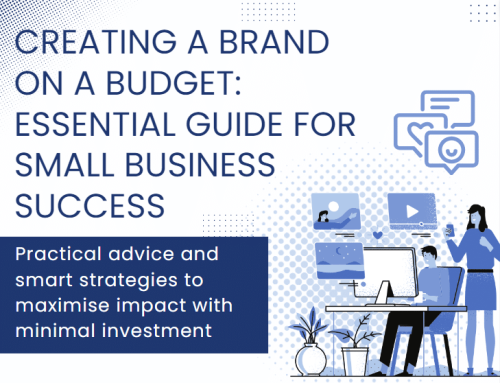PR: There may be no such thing as bad press, but here’s our guide for how business owners can drum up the good stuff
 Public relations.
Public relations.
It’s a term that conjures up images of stressed-out people shouting into mobile devices, trying to keep some celebrity or politician’s misdemeanours out of the press by distracting the public with a photo-op of them hugging a puppy.
Public relations (or PR) is so much more than reputational damage control. In fact, a well-executed PR strategy can (and should) be far more proactive (and less reactive) than is usually depicted on TV.
Often regarded as too time-consuming, unnecessary or only meant for big-fish businesses, PR is one of the promotional strategies most overlooked by business owners.
My advice as a business coach is to leverage this opportunity; while everybody is distracted by newer shinier tactics (chasing likes, hearts and shares on social media), you could be one of the few smart cookies taking advantage of this grand dame of the marketing mix and reaping the benefits.
So, in this short series on making the media work for you, let’s take a fresh look at PR: what it is, what it can do for your business and some simple ideas you can implement without it turning it into a full-time job.
First up: what is PR?
For our purposes, PR refers to the many ways business owners can increase brand awareness and engagement, strengthening relationships with existing and potential customers through creating media opportunities.
This opportunity to promote your business through mass mainstream and niche platforms (via online, TV, radio and print channels) can take many forms:
- Adding comment, a new perspective or ‘newsjacking’ stories published in your local print or online news platform (or even at a national level depending on your industry). For example, news.com.au posted a story on a ‘cleaning hack’ where a mum used kitchen detergent to clean her toilet. Master Plumbers CEO, Peter Daly, then provided comment advising on the safety of these types of hacks.
- Writing an opinion/editorial piece for mainstream media on an issue connected to your business. For example, this story on the portable long service scheme where the Managing Director of Realcorp, a commercial cleaning company, provided an opinion piece on changes to award entitlements for Facility Management Magazine.
- Guest posting for (or being featured in) a blog whose readership includes your target market. For example, a painting contractor might pitch an interior design blog to be interviewed on a topic such as “Choosing the right paint colour for your space” etc.
- Appearing as a guest on radio or on a podcast your customers listen to. For example, the CEO of a B2B business might pitch the producer to appear on the Qantas inflight business podcast, Talking Business with Alan Kohler. Since the listening audience would be other CEOs or key decision makers, it’s a prime opportunity to talk about what you do in front of a captive audience.
Why should I consider a PR strategy for my business?
As a business coach, I mentor business owners that there are many benefits to creating media coverage opportunities for your business.
Public relations is…
…Free (kind of)
They say that advertising is what you pay for and PR is what you pray for. That’s largely true; it’s promotion that won’t cost you a penny. For a business owner, this is a huge and undeniable benefit. It does, however, have its cons; with media coverage, you can’t control the message or the outcome (what gets said, whether and when the story actually gets published etc). There are definitely ways you can increase your chances but it’ll to cost you in elbow grease. (More on that later)
…More credible than advertising (and other marketing channels)
Possibly the main benefit of PR is that audiences understand that you haven’t paid to play, so they are far more likely to believe the messages you put out there about your business and brand. This is a unique opportunity in the marketing world; PR is right up there with positive testimonials, reviews and word of mouth referral for its ability to build positive customer relationships and goodwill using social proof.
… A prime opportunity to boost your visibility and authority
Since the Internet happened, online media coverage is forever. This vastly increases the chances of a potential customer coming across any past news stories, guest blogs or expert comment you’ve provided when they search for information about your business. It’s the gift that keeps on giving.
So, you’re convinced you should take on and conquer the media landscape… but what should you do first?
Before we get into the tools and tactics, let’s dig into the thinking part.
Getting started on a PR plan
Step 1. Recon mission: monitor your industry
My best business coach PR tip: sign up for Google Alerts. This will deliver a summary of articles about your industry straight to your inbox (based on your selected search terms). You’ll then get an idea of the types of stories that get published, the issues you should focus on and the people who write about your industry (so you can build relationships with them for future pitches etc).
Step 2. Get your head around goals
You’ll need to ask yourself “What do I want to get out of this PR exercise?” Is the goal to get new customers, or is it more about general brand awareness or authority-building? Your strategy around what you say and the media you target will change depending on what you hope to achieve.
Step 3. Determine what makes you different
The key question to ask yourself is “What sets me apart as an expert in this field?”. My business advice is always that what seems ordinary to you can often seem magic to someone else. PR offers an opportunity to show off your expertise, so you’ll need to have worked out what value you can bring to a reader – eg if you are an electrician pitching to a parenting blog, you might offer up your safety tips for new parents looking to baby-proof their home.
Step 4. Think about how you can make the media contact’s life easier
What can you offer journalists and other media producers that is newsworthy and/or relevant? I always mentor business owners that if your pitch comes with a ready-made angle, it takes some of the thought load off the journalist or editor. This may come in the form of an announcement, industry insight about a recent change, an industry award win, or an initiative your business is driving. For example, this story on Nick Tiling Services, a business supporting new Australians by creating employment and training opportunities.
Step 5. Map out media opportunities
Are there key times and opportunities that you could leverage? For example, you could pen a workplace safety story to be pitched in time for National Work Safe Month. The calendar is full of events and awareness campaigns that you can piggy-back an industry-based story on.
Tune in next time
Well that takes care of the ‘what’ and the ‘why’ of public relations for business owners. In the next instalment of this series, I’ll give you the tools and tactics that I’ve used during my time as a business coach to help business owners leverage the many PR opportunities out there.
For more marketing tools and tips, check out our series on business marketing essentials.
___




